- Page 3 and 4:
ABREVIATURAS Y SIGNOS EMPLEADOS EN
- Page 5 and 6:
a 4 a tesis a las páginas 18-19»
- Page 7 and 8:
a 6 a tiva necesidad que nuestra le
- Page 9 and 10:
abalanzarse 8 abolir sentido fundam
- Page 11 and 12:
ABREVIATURA 10 ABREVIATURA a (a) a/
- Page 13 and 14:
ABREVIATURA 12 ABREVIATURA n. n/ N
- Page 15 and 16:
abrigar 14 labras que sirven de tra
- Page 17 and 18:
acceder 16 acento pendientes suele
- Page 19 and 20:
acerca 18 acoger acerca. Acerca de
- Page 21 and 22:
acordeón 20 acrópolis acordarse c
- Page 23 and 24:
acuerdo 22 adelante acudir A ellos
- Page 25 and 26:
adipo- 24 adonde dos palabras, a Di
- Page 27 and 28:
advenir 26 aferrar advenir. Verbo i
- Page 29 and 30:
agave 28 agredir CONJUGACIÓN DEL V
- Page 31 and 32:
agricultural (conjugación como cam
- Page 33 and 34:
ahijar 32 ahora mundos', 'en cualqu
- Page 35 and 36:
Albocácer 34 alegrar tivo derivado
- Page 37 and 38:
Alguer 36 Alicante y carece de plur
- Page 39 and 40:
-allón 38 alrededor —significand
- Page 41 and 42:
altoparlante 40 amarar otros compar
- Page 43 and 44:
amenazar 42 amoniaco amenazar. Cons
- Page 45 and 46:
análogo 44 andar tos términos cul
- Page 47 and 48:
anfi- 46 anotador tivos. En cambio,
- Page 49 and 50:
anteriormente 48 Anticristo texto:
- Page 51 and 52:
ántrax 50 apartar ántrax. Es masc
- Page 53 and 54:
apertura 52 APOSICIÓN apertura —
- Page 55 and 56:
aprendiz peda» (Lynch); «aprende
- Page 57 and 58:
Aquisgrán 56 Argólida ción inici
- Page 59 and 60:
arqueo- 58 arriate arqueo-. Forma p
- Page 61 and 62:
Artemisa 60 asentir Cine, 8); «La
- Page 63 and 64:
Asia 62 asomar Pres. asgo, ases, as
- Page 65 and 66:
atar 64 atmo- atar. Construcción:
- Page 67 and 68:
atronar 66 aunque atronar. Verbo ir
- Page 69 and 70:
autoestop 68 aventar «El autodidac
- Page 71 and 72:
avión 70 ayudante avión. Avión A
- Page 73 and 74:
azumbre 72 azumbre Otra anomalía g
- Page 75 and 76:
abel 74 bajar las cuerdas vocales)
- Page 77 and 78:
ajorrelieve 76 balbucir CONJUGACIÓ
- Page 79 and 80:
Bañólas 78 Basutolandia ría, her
- Page 81 and 82:
erbiquí 80 bidé CONJUGACIÓN DEL
- Page 83 and 84:
imensual 82 blue-jeans bimensual. E
- Page 85 and 86:
oomerang 84 brevemente el tópico d
- Page 87 and 88:
Bugía 86 Bután francés, Bougainv
- Page 89 and 90:
ca 88 caber algunos nombres propios
- Page 91 and 92:
cada 90 caer cada. 1. Adjetivo de s
- Page 93 and 94:
calami- 92 callicida calami-, cála
- Page 95 and 96:
Camboya 94 campo 2. A cambio de, lo
- Page 97 and 98:
Cantón 96 carabiniere por la Acade
- Page 99 and 100:
carne 98 cásete compositor alemán
- Page 101 and 102:
caudimano 100 cefalo- CONJUGACION D
- Page 103 and 104:
cercano 102 cerúleo Pres. cierro,
- Page 105 and 106:
cha- 104 chance Después, Fernando
- Page 107 and 108:
Cheste 106 chocar Cheste. La ciudad
- Page 109 and 110:
cien 108 cierto cien —> CIENTO. c
- Page 111 and 112: Cister 110 claror Cister. Nombre de
- Page 113 and 114: clown 112 coche-cama CONJUGACIÓN D
- Page 115 and 116: cok 114 colmado cok. 'Sustancia car
- Page 117 and 118: combatir como 2. La coma, además d
- Page 119 and 120: como como 9. Como que. a) Conjunci
- Page 121 and 122: comparar ni a comparación DE: «La
- Page 123 and 124: con 122 concertar escribe en valenc
- Page 125 and 126: concluir 124 CONCORDANCIA por la Ac
- Page 127 and 128: concordar 126 condrio- 2. Es más f
- Page 129 and 130: confort 128 conque 2. Conjunción.
- Page 131 and 132: constatar 130 contexto el todo; el
- Page 133 and 134: contraer 132 convertir que Indurái
- Page 135 and 136: Cornualles 134 cosa Cornualles. Nom
- Page 137 and 138: Crevillente 136 cuadrafónico mona
- Page 139 and 140: cuál cualquiera 5. Usado como corr
- Page 141 and 142: cuándo 140 cuanto 6. Cuando menos,
- Page 143 and 144: cuidado 142 cuyo Marta, 225); dar c
- Page 145 and 146: d. 1. Cuarta letra del alfabeto. Su
- Page 147 and 148: Dánae 146 dar CONJUGACIÓN DEL VER
- Page 149 and 150: de 148 de 1) Realce de la cualidad
- Page 151 and 152: debido 150 decaer Pidal: «De este
- Page 153 and 154: declarar deflación CONJUGACIÓN DE
- Page 155 and 156: demás 154 dentro demás. 1. Adjeti
- Page 157 and 158: derrocar 156 desapercibido derrocar
- Page 159 and 160: descollar 158 desembocar 2. Constru
- Page 161: desmentida 160 despojar como cerrar
- Page 165 and 166: dieci- 164 diluviar cuente en algun
- Page 167 and 168: disc-jockey 166 dispensar CONJUGACI
- Page 169 and 170: -do 168 dodécuplo CONJUGACIÓN DEL
- Page 171 and 172: dónde -dor CONJUGACIÓN DEL VERBO
- Page 173 and 174: dudar 172 Dvina no cabe duda (o no
- Page 175 and 176: -ecezuelo 174 -edal no se da en muc
- Page 177 and 178: Éfeso 176 el de una misma palabra:
- Page 179 and 180: él un sujeto «él» / «ella» /
- Page 181 and 182: él 180 él c) El empleo de le como
- Page 183 and 184: -el ello cia cuando el se complemen
- Page 185 and 186: embarnecer 184 emboscar CONJUGACIÓ
- Page 187 and 188: emplear 186 en rio con cargo de res
- Page 189 and 190: encerrar 188 endemoniar encerrar. V
- Page 191 and 192: engolosinarse 190 enrarecer engolos
- Page 193 and 194: -ense 192 enterar CONJUGACIÓN DEL
- Page 195 and 196: entre- 194 entrevista mentos unidos
- Page 197 and 198: epiglotis 196 Erivan niño, según
- Page 199 and 200: -erro 198 escaldo Pres. yerro, yerr
- Page 201 and 202: esculpir 200 eslogan char como 'oí
- Page 203 and 204: espantar 202 esperma 2. A espaldas
- Page 205 and 206: estadounidense 204 estasis 2. Si se
- Page 207 and 208: este 206 estrabismo ciación respec
- Page 209 and 210: etíope 208 evónimo etíope. 'De E
- Page 211 and 212: exención 210 explotar uso más com
- Page 213 and 214:
f. Sexta letra del alfabeto. Su nom
- Page 215 and 216:
fedayin 214 FEMENINO El mes y el a
- Page 217 and 218:
fiar 216 fiordo fiar. 1. Se conjuga
- Page 219 and 220:
fluvio- 218 FRACCIONARIOS fluvio-.
- Page 221 and 222:
freno- 220 frisar CONJUGACIÓN DEL
- Page 223 and 224:
FUTURO 222 FUTURO d) Es anormal el
- Page 225 and 226:
g. 1. Séptima letra del alfabeto.
- Page 227 and 228:
Gdansk 226 Gerona Gdansk —> DÁNZ
- Page 229 and 230:
GERUNDIO 228 GERUNDIO Este gerundio
- Page 231 and 232:
ginecólogo 230 Gotemburgo ginecól
- Page 233 and 234:
grandilocuente plean, por dar una a
- Page 235 and 236:
GUIÓN 234 GUIÓN I. El guión en l
- Page 237 and 238:
Guipúzcoa 236 gymkhana III. Deben
- Page 239 and 240:
haber 238 haber CONJUGACIÓN DEL VE
- Page 241 and 242:
hablar 240 hacer CONJUGACIÓN DEL V
- Page 243 and 244:
hambre 242 hasta tar generalmente e
- Page 245 and 246:
henchir 244 hexa- jia/). La Academi
- Page 247 and 248:
hiper- 246 Hispanoamérica India. E
- Page 249 and 250:
homeo- 248 hugonote hay una pequeñ
- Page 251 and 252:
i. 1. Novena letra del alfabeto. El
- Page 253 and 254:
ictio- 252 íleon griego klásis, '
- Page 255 and 256:
impetrar 254 imprimir Las únicas f
- Page 257 and 258:
incluyendo 256 inescrutable incluye
- Page 259 and 260:
inflación 258 influir Sobre las fo
- Page 261 and 262:
innocuo 260 íntegro innocuo —> I
- Page 263 and 264:
INTERROGACIÓN 262 INTERROGACIÓN -
- Page 265 and 266:
-ir 264 -ísimo nes de España y de
- Page 267 and 268:
itsmo 266 -izuelo itsmo —> ISTMO.
- Page 269 and 270:
jabalí 268 Jérica cuando en estos
- Page 271 and 272:
júnior 270 juzgar Pres. juego, jue
- Page 273 and 274:
kerosene 272 Kuwait definiría mejo
- Page 275 and 276:
languidecer 274 lejos ¡and, conven
- Page 277 and 278:
levantar 276 limpiar levantar. Cons
- Page 279 and 280:
llamado 278 -logo lenguas— como u
- Page 281 and 282:
luso- 280 luso- Pres. luzca, luzcas
- Page 283 and 284:
magnetófono 282 mal- masculino o f
- Page 285 and 286:
malpensado 284 manera este adjetivo
- Page 287 and 288:
marca 286 más marca. 1. Para tradu
- Page 289 and 290:
masacrar 288 mayoría masacrar, mas
- Page 291 and 292:
Mazalquivir 290 mecano- mia, cuando
- Page 293 and 294:
mediodía 292 mejor del lugar en qu
- Page 295 and 296:
menos 294 -mentó 2. Sobre la const
- Page 297 and 298:
meter 296 mientras meter. Construcc
- Page 299 and 300:
mirar 298 mitin míos, mías. Cuand
- Page 301 and 302:
Mogente 300 motocross Mogente. La c
- Page 303 and 304:
mudar 302 multimedia CONJUGACIÓN D
- Page 305 and 306:
Munguía 304 Myanmar dad 4 veces ma
- Page 307 and 308:
natura 306 nerviosismo natura. Cont
- Page 309 and 310:
no 308 nocti- timental» (Mundo, 8.
- Page 311 and 312:
noray 310 novecientos reano). La fo
- Page 313 and 314:
NUMERALES 312 NUMERALES 0 1 2 3 4 5
- Page 315 and 316:
número 314 nylon b) La función de
- Page 317 and 318:
o '. Decimosexta letra del alfabeto
- Page 319 and 320:
obstar 318 oeste bien Apuntaciones,
- Page 321 and 322:
320 olvidar CONJUGACIÓN DEL VERBO
- Page 323 and 324:
-onazo 322 optativo mente despectiv
- Page 325 and 326:
ordenador 324 ORDINALES 4. En orden
- Page 327 and 328:
orfanato 326 -ota nominan en castel
- Page 329 and 330:
p. Decimoséptima letra del alfabet
- Page 331 and 332:
papa 330 par sora de Madrid habló,
- Page 333 and 334:
parangón 332 parquet rezca, las do
- Page 335 and 336:
partir 334 pasteurizar das las mano
- Page 337 and 338:
ped- 336 penalty ped-. Forma prefij
- Page 339 and 340:
perecer 338 pero perecer. Verbo irr
- Page 341 and 342:
petrolífero 340 ping-pong petrolí
- Page 343 and 344:
play-back 342 PLURAL teau. Por tant
- Page 345 and 346:
poco 344 poder CONJUGACIÓN DEL VER
- Page 347 and 348:
policía 346 popurrí policía. 1.
- Page 349 and 350:
porción 348 pos- puede; Plazas por
- Page 351 and 352:
POTENCIAL 350 POTENCIAL distingue d
- Page 353 and 354:
preeminencia 352 presentar preemine
- Page 355 and 356:
presidente 354 PRETÉRITO ANTERIOR
- Page 357 and 358:
PRETÉRITO INDEFINIDO 356 PRETÉRIT
- Page 359 and 360:
PRETÉRITO PLUSCUAMR 358 PRETÉRITO
- Page 361 and 362:
prever 360 prisma él'; preverlo es
- Page 363 and 364:
promiscuar 362 pronto promiscuar. S
- Page 365 and 366:
propugnar 364 próximo CONJUGACIÓN
- Page 367 and 368:
pudding 366 puesta pecable y lacón
- Page 369 and 370:
PUNTUACIÓN 368 PUNTUACIÓN De las
- Page 371 and 372:
PUNTUACIÓN 370 PUNTUACIÓN oració
- Page 373 and 374:
puntuar 372 puzzle VIII. Corchetes.
- Page 375 and 376:
que 374 que que de la preposición
- Page 377 and 378:
quedar 376 quien pronuncia /kéchua
- Page 379 and 380:
quienquiera 378 quitar 5. Quién m
- Page 381 and 382:
. 1. Decimonovena letra del alfabet
- Page 383 and 384:
ally 382 rara avis CONJUGACIÓN DEL
- Page 385 and 386:
ealzar 384 recién realzar. 'Destac
- Page 387 and 388:
econvertir 386 refregar 2. Construc
- Page 389 and 390:
elación 388 reloj CONJUGACIÓN DEL
- Page 391 and 392:
eóstato 390 repetir Pres. riño, r
- Page 393 and 394:
esabiar 392 retractarse que es pref
- Page 395 and 396:
Rin 394 romper CONJUGACIÓN DEL VER
- Page 397 and 398:
s. Vigésima letra del alfabeto esp
- Page 399 and 400:
safari 398 salpicar En cambio, el a
- Page 401 and 402:
Sangenjo 400 scout las múltiples v
- Page 403 and 404:
script 402 según flujo (en la u) d
- Page 405 and 406:
Sender 404 señor CONJUGACIÓN DEL
- Page 407 and 408:
ser 406 ser quier palabra sustantiv
- Page 409 and 410:
seseo sión de la /a/: /ochentidós
- Page 411 and 412:
SI 410 si estaba solo; «Lleva [tú
- Page 413 and 414:
Sierra Leona 412 SIGLA 4. Siempre y
- Page 415 and 416:
sinfonier 414 situar nidad': Había
- Page 417 and 418:
sobrefatiga 416 soldado sobrefatiga
- Page 419 and 420:
somato- 418 sospechar es /somália/
- Page 421 and 422:
stablishment 420 subregión Ceilán
- Page 423 and 424:
sumir 422 suscribir sumir. Construc
- Page 425 and 426:
sutil 424 symposium (substancia: su
- Page 427 and 428:
talvez 426 tanto En lenguaje poéti
- Page 429 and 430:
taxi- 428 tema CONJUGACIÓN DEL VER
- Page 431 and 432:
tenérrimo 430 tesitura parcialment
- Page 433 and 434:
tijeras 432 TILDE una lanza», Garc
- Page 435 and 436:
-timia 434 todo con sus femeninos y
- Page 437 and 438:
tortícolis 436 (Carpentier, Reino,
- Page 439 and 440:
transcripción 438 trasegar 2. Sobr
- Page 441 and 442:
través 440 tricot taba de una pura
- Page 443 and 444:
Tubinga 442 txistu mencionado dos v
- Page 445 and 446:
-ueno 444 un combina con -z: patizu
- Page 447 and 448:
-uno la prosa normal (y la más ló
- Page 449 and 450:
v. 1. Vigesimotercera letra del alf
- Page 451 and 452:
vascuence 450 venir CONJUGACIÓN DE
- Page 453 and 454:
452 vez CONJUGACIÓN DEL VERBO «VE
- Page 455 and 456:
videocasete 454 visión Argentina,
- Page 457 and 458:
volver 456 vosotros luntad: Trabaja
- Page 459 and 460:
w. 1. Vigesimocuarta letra del alfa
- Page 461 and 462:
y '. 1. Vigesimosexta letra del alf
- Page 463 and 464:
yen 462 CONJUGACIÓN DEL VERBO «YA
- Page 465 and 466:
z. 1. Vigesimoséptima y última le
- Page 467 and 468:
APÉNDICES
- Page 469 and 470:
Conjugación de los verbos 470 Futu
- Page 471 and 472:
Conjugación de los verbos 472 sufr
- Page 473 and 474:
Conjugación de los verbos 474 21.
- Page 475 and 476:
Conjugación de los verbos 476 (o d
- Page 477 and 478:
II. Vocabulario ortográfico 1. Est
- Page 479 and 480:
abobar 481 acambrayado abobar. Hace
- Page 481 and 482:
aeróbic 483 ahusarse aeróbic o, a
- Page 483 and 484:
aleve 485 ambivalente aleve. Pérfi
- Page 485 and 486:
antihemorroidal 487 argento antihem
- Page 487 and 488:
atrezo 489 axiología atrezo*. atri
- Page 489 and 490:
ahareque 491 bando bahareque. Bajar
- Page 491 and 492:
arrer 493 bauza barrer. Limpiar con
- Page 493 and 494:
erkelio 495 bigamo berkelio. Elemen
- Page 495 and 496:
it 497 boleta bit. Unidad de medida
- Page 497 and 498:
oruca 499 bufo boruca. Bulla. borug
- Page 499 and 500:
cabal. Justo. cabala. Cálculo, con
- Page 501 and 502:
carcaj 503 cédula carbonífero -ra
- Page 503 and 504:
cianhídrico 505 cohombro cianhídr
- Page 505 and 506:
consejero consejero -ra. El que aco
- Page 507 and 508:
cruasan 509 debocar cruasan*. cruci
- Page 509 and 510:
desbocar desenrollar desbocar. Quit
- Page 511 and 512:
despolvar 513 digital despolvar. De
- Page 513 and 514:
eclampsia 515 embeleñar eclampsia.
- Page 515 and 516:
encarcavinar 517 enrollar encarcavi
- Page 517 and 518:
ervato 519 estrangular materias de
- Page 519 and 520:
excrex 521 exquisito excrex. Donaci
- Page 521 and 522:
fargallón 523 fútbol rápida. Far
- Page 523 and 524:
gavial 525 gincana gavial. Saurio.
- Page 525 and 526:
guayuco 527 haragán guayuco. Tapar
- Page 527 and 528:
hepta- 529 hiena hepta-. Prefijo qu
- Page 529 and 530:
hocino hosco hocino. Hoz. hockey. D
- Page 531 and 532:
iatrogénico -ca. Causado por el m
- Page 533 and 534:
inobservable 535 inyectar inobserva
- Page 535 and 536:
jibia 537 kirsch rindió del Amazon
- Page 537 and 538:
levigar 539 luxemburgués Leví; pr
- Page 539 and 540:
manivacío manivacío -a. Con las m
- Page 541 and 542:
motu proprio motu proprio. Loe. lat
- Page 543 and 544:
obnubilar 545 órbita jetivación,
- Page 545 and 546:
panhispánico 547 pelvis la unión
- Page 547 and 548:
polka 549 probar polka —> polca*,
- Page 549 and 550:
quark*. quásar*. quebrantahuesos.
- Page 551 and 552:
edhibir 553 remover redhibir. Anula
- Page 553 and 554:
evolver 555 rutherfordio revolver.
- Page 555 and 556:
savia 557 símbolo savia. Líquido
- Page 557 and 558:
soliviar 559 suyo soliviar. Ayudar
- Page 559 and 560:
tartaja 561 tornavirón tartaja. Ta
- Page 561 and 562:
trolebús 563 uzbeko trolebús. Veh
- Page 563 and 564:
varenga 565 ventaja varenga. Brazal
- Page 565 and 566:
vestíbulo 567 violle vestíbulo. E
- Page 567 and 568:
volteriano 569 wólfram volteriano
- Page 569 and 570:
yugoslavo 571 zulla De Yugoslavia o


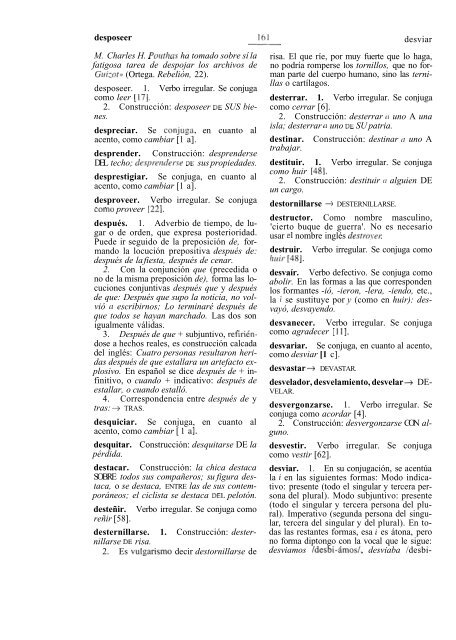

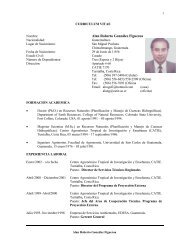
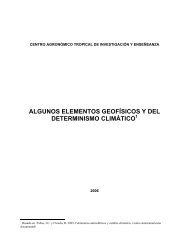
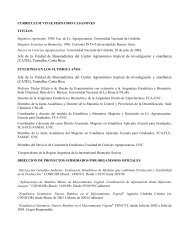
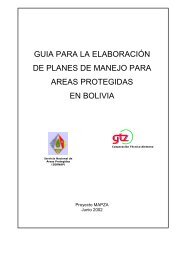
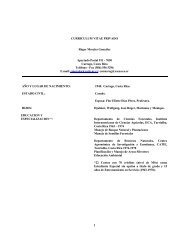
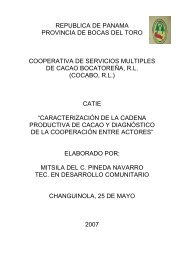

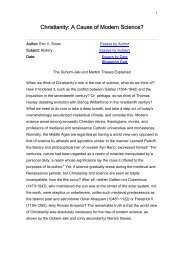
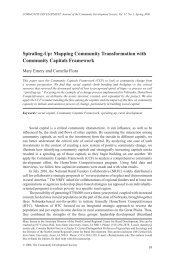

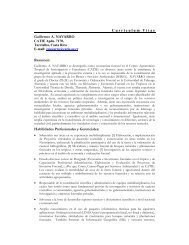

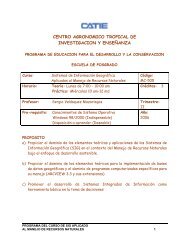
![Tratamientos y MD_2009 [Modo de compatibilidad].pdf - Catie](https://img.yumpu.com/49175499/1/190x134/tratamientos-y-md-2009-modo-de-compatibilidadpdf-catie.jpg?quality=85)